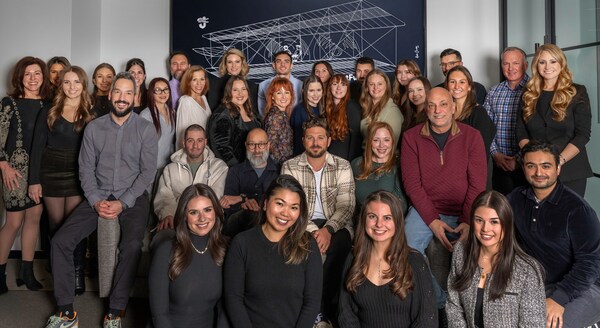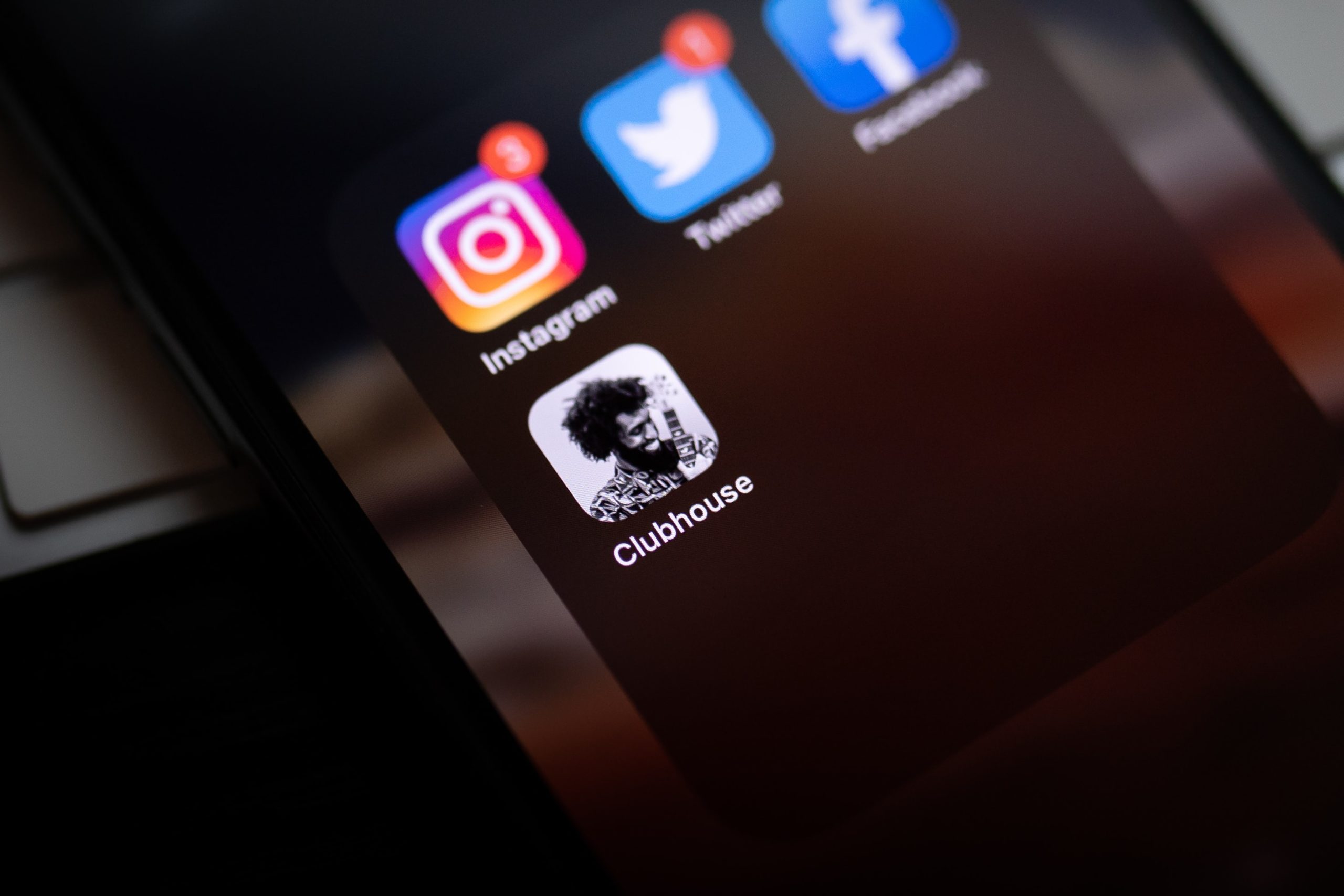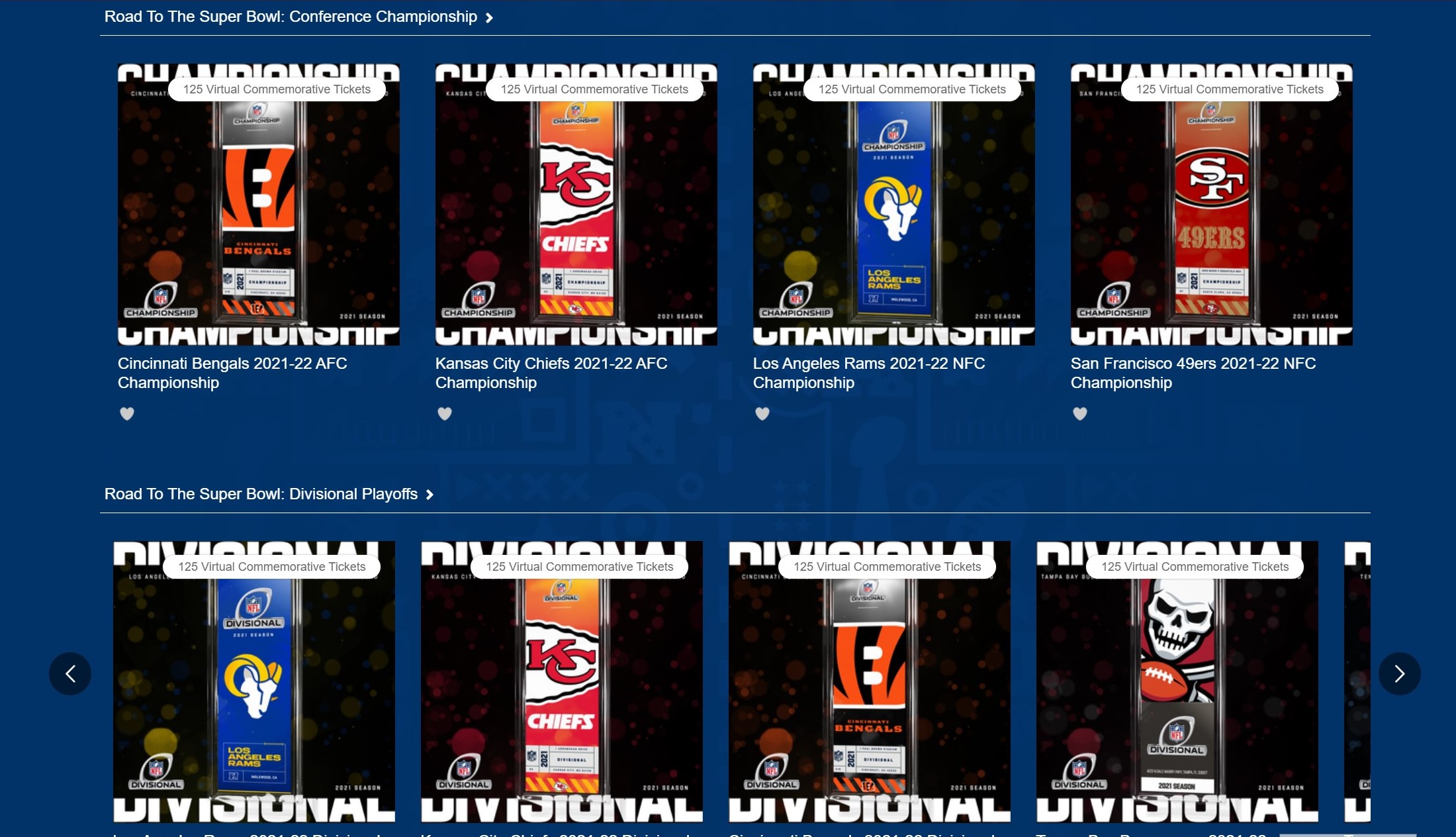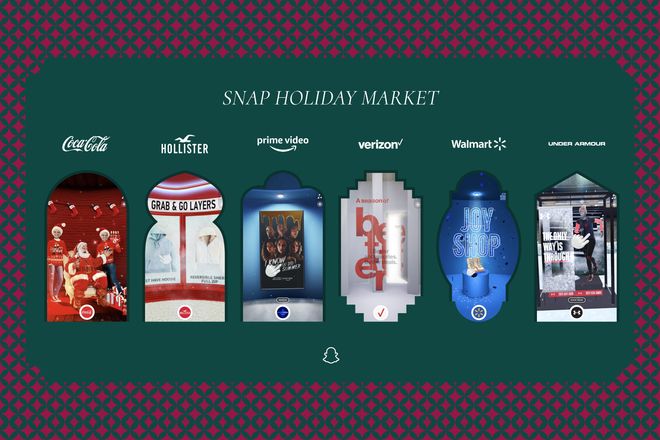By Lindsay Hong, Chief Operating Officer, Locaria
CONTACT
hello@stagwellglobal.com
SIGN UP FOR OUR INSIGHTS BLASTS
Marketing Frontiers is a new series from Stagwell exploring the methods, mediums, and messes modern marketers will grapple with over the next decade as they chart transformation in the discipline. This March, Stagwell is exploring Audio.
TL;DR:
Audio provides disproportionate opportunities to gain cut-through in certain markets and demographics. Localization is the gateway to both accessing the best global content for US consumers, and scaling US brands worldwide.
With no images to aid understanding, successful audio localization has to be high quality, and still requires a human touch.
Approach localization the same as global media planning.
Recent research has shown a renaissance in the popularity of audio content amongst U.S. consumers, with younger segments finding audio more trustworthy than other digital channels. Additionally, as the popularity of shows such as Squid Game has recently shown, consumers in the U.S. have a growing appetite for international content. As brands shore up their global content properties in the coming years, the key to meeting the demand for international and multicultural audio content will be a smart approach to localization.
Engaging US audiences with the best creative work emerging overseas
The US audience benefits from a wealth of high-quality domestic content, produced with big budgets and starring global talent. When seeking impactful international content in this mature environment, the uncomfortable truth is that all creative markets are not equal.
Some markets have prioritized creative industries and are stronger sources for new video and audio content. The focus the South Korean government has put on creative industries as a source of regional influence since the Korean War has contributed to the success of Squid Game. The global content market is huge. As brands look to shore up their international content properties in the coming years, starting with content from markets that have already proven their creative skills in cinema could provide quick wins. For example: in Europe, Germany, France, and the UK are well known for their cinematic prowess, while the Nordic countries offer opportunities with their noir genre. Further afield, India (Bollywood) and Nigeria (Nollywood) already produce English language content, requiring less adaptation for the US.
Once great content has been found, adapting it for US audiences requires linguistic skills and deep cultural understanding. Editorial decisions have to be made in partnership with localization to ensure the original language’s drama, romance, or humor is not lost in translation. Collaborative workflows between creative and production talent are essential for making efficient adaptation decisions. Building audience data into that process can reduce subjectivity, speed up the process and reduce controversy around localization choices.
Leveraging US content to reach international audiences
While US consumers are seeking international content, authentic American stories can also play well globally. In the race to develop an audio content universe, brands should consider tapping into the expansive body of compelling U.S. podcasts and localizing them for international reach.
It’s important to note that audio content, unlike video, provides no visual aids to the consumer to support understanding, so high quality localization is even more important. Developments in AI technology and improvements in home recording equipment are reducing costs and speeding up audio localization, unlocking global audiences. However, as most creative content still requires human intervention and editorial agreement, brands should apply a targeted approach. By investing in localization where brands can have the most impact and utilizing a variety of methodologies to deliver local language content, costs can be controlled. So which markets offer the greatest opportunities to engage audiences with series like Serial or Smartless?
When it comes to the percentage of internet users consuming podcasts:
- Sweden, Norway and Denmark all over-index. The Nordics offer a wealthy consumer base, and a less competitive marketing environment than other European and English-speaking markets, providing attractive opportunities for growth.
- Spanish is becoming the second universal language for podcasting. In 2021, Mexico had a higher podcast penetration than most of Europe. Localizing to Mexican Spanish has the added benefit of offering deeper engagement with US Hispanic audiences.
Lastly, English-speaking markets can be a quick win, but to have real resonance and stand out from the competition, brands should adapt content to local English versions. They should also look at adapting content such as track listings or summaries and consider offering supplemental information explaining certain terms. This makes audiences feel better understood and drives loyalty.
Key Takeaways
- Audio provides disproportionate opportunities to gain cut-through in certain markets and demographics. Localization is the gateway to both accessing the best global content for US consumers, and scaling US brands worldwide.
- With no images to aid understanding, successful audio localization has to be high quality, and still requires a human touch. Locaria’s ISO-certified global network of highly skilled talent ensures messages have impact in any market, and protect your brand from embarrassing mistakes.
- Approach localization the same as global media planning. With an approach similar to media planning, Locaria’s content analysts ensure efficient global scaling of content across all channels, based on business objectives, and respecting budgets.
Learn more about how Locaria can help you scale your content globally here.
—
Locaria is a pioneering multilingual content activation agency which specializes in supporting in-house marketing and e-commerce teams, media agencies and creative production houses. We build linguistic solutions to scale content and campaigns internationally, while carefully balancing efficiency, effectiveness, creativity and quality.
Related
Articles
Acquisition, In the News, Press Releases
May 06, 2025
Stagwell (STGW) Acquires Experiential Marketing and Creative Agency JetFuel

In the News, Marketing Frontiers, Press Releases, Stagwell Marketing Cloud
Apr 02, 2025
The European Commission Expands its Partnership with UNICEPTA by PRophet to Include Media Analysis

Artificial Intelligence, In the News, Marketing Frontiers, Press Releases
Apr 02, 2025
Stagwell (STGW) Appoints John Kahan as Inaugural Chief AI Officer

Newsletter
Sign Up
CONTACT
hello@stagwellglobal.com
SIGN UP FOR OUR INSIGHTS BLASTS
Amid the global consumer craving for new experiences driven by the pandemic, social audio bloomed in popularity through 2020 and 2021. A year later, some of the buzz around the platform driving the trend – Clubhouse – has fizzled, but experiments in the space from key social platforms like Twitter and Reddit, and audio superstar Spotify, show there’s still terrain to be mapped. But are consumers into social audio? What opportunities does the content create? And what are the barriers to widespread adoption and growth that brands should be on the lookout for? Stagwell’s experts from KWT Global, HUNTER, and Meat & Produce address where social audio is headed in 2022.

Niche Will Drive the Social Audio Experience
Jessica Spar, SVP, Digital, KWT Global
Social audio isn’t going anywhere any time soon, but the bigger questions are: Who is tuned in? And where? Clubhouse was meant to be the next big thing, but its fifteen minutes of fame have passed. Was this because the format didn’t ultimately have long term potential? Or because it was a good idea with poor execution? Twitter Spaces seems to be banking on the latter, yet with significant shifts in the cultural and social landscape over the last few years, Twitter may not be primed for the success it expects.
 Twitter is counting on mass appeal for Twitter Spaces based on its 300 million+ monthly users. However, the masses are moving in a different direction – younger audiences are increasingly leaning into Instagram and TikTok as their platforms of choice, with video as the dominating medium. Social audio has a completely different definition on these platforms. Where Clubhouse and Twitter Spaces focus on live conversation, TikTok and Instagram’s definition of social audio includes everything from audio remixes to sharing the latest sound trends, which doesn’t require the same level of focus, attention, and participation as the live conversational formats of Clubhouses and Twitter Spaces.
Twitter is counting on mass appeal for Twitter Spaces based on its 300 million+ monthly users. However, the masses are moving in a different direction – younger audiences are increasingly leaning into Instagram and TikTok as their platforms of choice, with video as the dominating medium. Social audio has a completely different definition on these platforms. Where Clubhouse and Twitter Spaces focus on live conversation, TikTok and Instagram’s definition of social audio includes everything from audio remixes to sharing the latest sound trends, which doesn’t require the same level of focus, attention, and participation as the live conversational formats of Clubhouses and Twitter Spaces.
To succeed, Twitter Spaces will need to rely on highly engaged niche interest groups, which is a model already owned by Reddit. As a platform founded on niche interest groups, Reddit is now throwing its hat into the social audio ring as well with Reddit Talk. Reddit could succeed where Clubhouse failed (and Twitter Spaces seems to be failing), as they have the framework for success built into their platform already. The platform’s subreddit model and moderation policies lend themselves well to a similar setup for live audio discussion. Clubhouse, on the other hand, was still working through the right setup for rooms when users started to lose interest, and Twitter’s struggles have come in on the moderation side of things. Without clear moderation frameworks, brands may find social audio experiences too risky.
All to say, no clear winner has emerged in the social audio game when it comes to live conversation, so it will be interesting to see which platform, if any, can get it right!
Platform Investment Means Social Audio is Here to Stay
Michael Lamp, Chief Digital Officer, HUNTER
Despite Clubhouse’s fizzle-out, there’s still a ton of heat around social audio. Twitter Spaces has outpaced all its other recent innovations and is driving a lot of thumb-stopping based on the way live Spaces appear in the mobile app (à la IG Stories…just begging to be clicked). Spotify launched its version of audio rooms – Greenroom – in July of 2021 and Facebook continues to promote its Live Audio Rooms with select Creator partners.
 Perhaps most indicative of Social Audio’s staying power, though, is Reddit’s offering: Reddit Talk. A mobile-only product for a while, it rolled out to the web version just this year, adding several new features, including the ability to listen to recorded sessions.
Perhaps most indicative of Social Audio’s staying power, though, is Reddit’s offering: Reddit Talk. A mobile-only product for a while, it rolled out to the web version just this year, adding several new features, including the ability to listen to recorded sessions.
Beyond these specific products offered by existing platforms, the broader trend of sensorial social is what we’re watching, buoyed by the staying power of podcasts, ASMR and long-form, audio-as-video content. From sight to sound to virtual realities in the metaverse simulating touch, where will the fight for consumer attention take us next?
Content Creators Hold the Key for the Future of Social Audio
Christine McDermott, VP, Meat & Produce
Amidst the “we’re all in this together” enthusiasm of 2020 (remember after work Zoom drinks? Yea, sorry to remind you…) friends, families and companies jumped into the online world headfirst. The need for connection, exacerbated by the pandemic, was real but screen fatigue quickly set in. This combination created a gateway for an explosion of audio content. While it appeared to have been spurred on by our “unprecedented times,” the audio movement had been building for years with the groundwork laid by the increasing popularity of podcasts.
 This brings us back to Clubhouse: despite downloads having plummeted after the initial hype, every major social platform has continued to invest in the development of audio. Think Twitter Spaces, Facebook Live Rooms and Spotify Greenroom. Notably, the names of these efforts focus on referencing physical locations, highlighting the opportunity audio provides for greater connection and inclusion across hybrid brand ecosystems. Even LinkedIn has recently jumped on the bandwagon, extending their live events to include audio-only events. Audio-only can level a playing field in terms of providing engagement opportunities without judgment on appearance or location (i.e. no need for staged Zoom backgrounds…)
This brings us back to Clubhouse: despite downloads having plummeted after the initial hype, every major social platform has continued to invest in the development of audio. Think Twitter Spaces, Facebook Live Rooms and Spotify Greenroom. Notably, the names of these efforts focus on referencing physical locations, highlighting the opportunity audio provides for greater connection and inclusion across hybrid brand ecosystems. Even LinkedIn has recently jumped on the bandwagon, extending their live events to include audio-only events. Audio-only can level a playing field in terms of providing engagement opportunities without judgment on appearance or location (i.e. no need for staged Zoom backgrounds…)
No social form of social media is an island, or could possibly exist in isolation, and thus the popularity of audio has bloomed beyond audio-only channels. For years, the advice brands and agencies heard from Facebook was to design content for sound-off as well as sound-on. This was based on the insight that most users would consume content while silently scrolling through feeds. Now users discover cultural moments by tapping into trending audio on TikTok; the audio content drives the cultural relevance consumers are seeking in their entertainment consumption.
The key to the future of audio lies in the hands of creators, both from a platform and consumer perspective. The possibilities here are immense: since it is more cost effective to create high-quality audio than video, audio’s proliferation will enable new and underrepresented voices to enter the mainstream. Additionally, audio content and interactions allow for deeper discussions around key issues we face today while simultaneously enabling a greater level of empathy to be built between listeners. Imagine the nuance that voice provides enhancing conversation and discourse, as opposed to the impersonal, text-based comment battles we see across social media so often. Through strategic creator partnerships, our brands can find authentic ways to enter the conversations that are matter to their consumers.
With the ongoing evolutions we are seeing in this space – from increasing formats and channels to greater accessibility options – audio will continue to play a more important role in our social mix, from channel planning to creative development.
Related
Articles
Acquisition, In the News, Press Releases
May 06, 2025
Stagwell (STGW) Acquires Experiential Marketing and Creative Agency JetFuel

In the News, Marketing Frontiers, Press Releases, Stagwell Marketing Cloud
Apr 02, 2025
The European Commission Expands its Partnership with UNICEPTA by PRophet to Include Media Analysis

Artificial Intelligence, In the News, Marketing Frontiers, Press Releases
Apr 02, 2025
Stagwell (STGW) Appoints John Kahan as Inaugural Chief AI Officer

Newsletter
Sign Up
By Fergus Navaratnam-Blair and Keith Wagstaff, National Research Group
CONTACT
hello@stagwellglobal.com
SIGN UP FOR OUR INSIGHTS BLASTS
Marketing Frontiers is a new series from Stagwell exploring the methods, mediums, and messes modern marketers will grapple with over the next decade as they chart transformation in the discipline. This March, Stagwell is exploring Audio.
TL;DR:
Consumers desire a single platform to satisfy all their listening needs, making the audio streaming wars a hotter competition for attention than video and TV.
The success of global entertainment content in recent years presents a clear opportunity for content development in audio.
Audio streaming is still a nascent space – so prioritize identifying early gaps or “deserts” that can become substantial growth opportunities
The audio streaming wars have been back in the spotlight in recent weeks following a high-profile boycott of Spotify launched by rock legend Neil Young in protest over COVID misinformation on the platform. Across social media, there has been fierce debate about how much responsibility streaming services should take for the content they host—and what ethical and financial obligations these platforms have to the creators who depend on them.
There’s a reason that these debates attract so much media and consumer interest. It’s becoming increasingly clear that the audio wars are a zero-sum game—much more so than TV and film. As a result, it’s impossible to separate the fate of giants like Spotify from the fate of the audio streaming industry at large.
Why is it zero-sum game?
Unlike video streaming, where the average consumer has a subscription to five different services, 83% of Americans prefer to turn to a single audio app to satisfy all their listening needs. And 86% of consumers say that they’re unlikely to start paying for a new audio streaming service within the next six months.
The barriers to entry in this market are exceptionally high. Most consumers simply aren’t willing to use multiple services to track down all the music and podcasts they want to listen to. And once they’ve found a service they like, they’re unlikely to jump ship—especially since doing so usually means abandoning the playlists they’ve lovingly curated over time.
So, what can brands do to attract new users with audio content such a cut-throat and competitive environment? Here are three recommendations from our research:
Find ways to make your users feel closer to the creators they love
Consumers don’t want to be passive listeners anymore; they want to immerse themselves in the creator economy and feel like part of an active, thriving community. 69% of listeners say that they want to do more to support their favorite creators—for example, by buying merch, attending live events, or engaging in micro-payments. And two thirds of them are interested in one day learning how to create audio content themselves.
Focus on creating a truly global content library
The success of overseas streaming content like Squid Game and Money Heist demonstrates that Americans are increasingly willing to engage with media from outside their own country. And the data suggests that this is just as true for audio content. 7 in 10 Gen Zs and Millennials use podcasts as a way of virtually travelling to new places and hearing new perspectives, and 42% of consumers say they’ve started listening to cross-cultural podcasts within the past year.
Identify “audio deserts” and create content to fill those gaps
Despite the boom in audio content over the last few years, not all audiences have been equally well-served by the content on offer. For example, Black and low-income consumers are more likely than other groups to say that they’re not interested in the audio content currently available on the market. Identifying and targeting these audiences that have, so far, been left behind by the streaming boom can help your platform create a resilient niche for itself. And as evidenced by the strong mix of more diverse content dominating the entertainment wars on social and streaming properties, engaging with these audiences can be great for driving growth.
For more on the listening habits of consumers, and what they mean for streaming services, see our full report: Welcome to the Future of Digital Audio.
Related
Articles
Acquisition, In the News, Press Releases
May 06, 2025
Stagwell (STGW) Acquires Experiential Marketing and Creative Agency JetFuel

In the News, Marketing Frontiers, Press Releases, Stagwell Marketing Cloud
Apr 02, 2025
The European Commission Expands its Partnership with UNICEPTA by PRophet to Include Media Analysis

Artificial Intelligence, In the News, Marketing Frontiers, Press Releases
Apr 02, 2025
Stagwell (STGW) Appoints John Kahan as Inaugural Chief AI Officer

Newsletter
Sign Up
Related
Articles
Acquisition, In the News, Press Releases
May 06, 2025
Stagwell (STGW) Acquires Experiential Marketing and Creative Agency JetFuel

In the News, Marketing Frontiers, Press Releases, Stagwell Marketing Cloud
Apr 02, 2025
The European Commission Expands its Partnership with UNICEPTA by PRophet to Include Media Analysis

Artificial Intelligence, In the News, Marketing Frontiers, Press Releases
Apr 02, 2025
Stagwell (STGW) Appoints John Kahan as Inaugural Chief AI Officer

Newsletter
Sign Up
By Lisa Rosenberg, Partner + President, Consumer Brands at Allison+Partners
CONTACT
hello@stagwellglobal.com
SIGN UP FOR OUR INSIGHTS BLASTS
Marketing Frontiers is a new series from Stagwell exploring the methods, mediums, and messes modern marketers will grapple with over the next decade as they chart transformation in the discipline. This February, Stagwell is exploring NFTs.
Virtual worlds are on the rise – and the time people spend in them is only going to increase. With popular artists such as Justin Bieber, Travis Scott and Ariana Grande having already performed in the metaverse, brands know that the future is virtual and that the possibilities of marketing in the metaverse are seemingly endless. In the last few months, we’ve seen an explosion of brands using NFTs to connect with and engage their consumers.

As AOR for Budweiser, Allison+Partners supported the brand’s entry into the metaverse with the launch of the Budverse Heritage Collection on Cyber Monday 2021. The brand’s first-ever NFTs are a curated set of unique digital cans representing 1936, the year the first Budweiser can was created. This launch marked the brand’s first foray into the world of unique digital assets on the blockchain and represented Anheuser-Busch InBev’s first owned NFT marketplace, Budwesier.com/NFT. Each Heritage Collection token is a one-of-a-kind digital asset generated using designs from throughout Budweiser’s history and was available to consumers of legal drinking age via two different token types at launch – Core Heritage Cans and Gold Heritage Cans. The Gold Heritage Cans are rarer, with only 36 in existence and included access to and/or exclusives for future Budweiser in-person events and early access to future brand NFT launches. There were 1900 Core Heritage cans released.
The launch was incredibly successful, with the collection selling out within an hour, a fact the team quickly added to media follow ups, with efforts resulting in 243 million impressions, including coverage in Entrepreneur, Decrypt, and multiple stories in AdAge.
For an iconic brand like Budweiser, there are numerous benefits to being seen as an early adopter in this space. The brand has been a major influencer and contributor in sports and entertainment and NFTs represent the future of where consumers are going to socialize and be entertained. In addition, NFT marketplaces enable Budweiser to provide consumers with a richer and deeper brand experience, leveraging technology for increased engagement.
Late last month, the A+P team supported the brand’s release of its second NFT collection, The Budweiser Royalty Collection, which also quickly sold out. The brand partnered with 22 of the world’s top emerging music artists to drop their first-ever NFTs and provide them with a global platform they might not have access to otherwise. The drop also allowed fans the opportunity to support artists directly and potentially unlock exclusive experiences with them. Through the Budweiser Royalty Collection, Budweiser continues to give local artists a global platform and support their journey towards becoming the next Kings and Queens of the music industry. Coverage resulted in 144 million impressions and included stories in Benzinga, Medium, INSIDER and many more.
Earned coverage of Budweiser’s entry into NFTs successfully positioned the brand as an innovative leader in the space and demonstrated how AB InBev is leveraging technology to engage brand fans in an entirely new way. Both the Budverse Heritage Collection and the Budweiser Royalty Collection offered consumers the ability to collect and own a digital piece of the Budweiser brand, as well as gain exclusive access to brand experiences.
Related
Articles
Acquisition, In the News, Press Releases
May 06, 2025
Stagwell (STGW) Acquires Experiential Marketing and Creative Agency JetFuel

In the News, Marketing Frontiers, Press Releases, Stagwell Marketing Cloud
Apr 02, 2025
The European Commission Expands its Partnership with UNICEPTA by PRophet to Include Media Analysis

Artificial Intelligence, In the News, Marketing Frontiers, Press Releases
Apr 02, 2025
Stagwell (STGW) Appoints John Kahan as Inaugural Chief AI Officer

Newsletter
Sign Up
By Will Johnson, CEO, Harris Poll
and Scott Weintraub, VP of Brand Growth, R&CPMK
CONTACT
hello@stagwellglobal.com
SIGN UP FOR OUR INSIGHTS BLASTS
Everyone is trying to figure out what to do about non-fungible tokens (NFTs). These modern tools, born out of the crypto boom, have been viewed as both a passing fad and a future tool for artistic compensation.
Recent research from The Harris Poll and R&CPMK found that about half of consumers familiar with NFTs (47%) are interested in brands offering them as a commercial product, providing new use cases for brand marketers to capitalize on the hyper-relevant digital tokens that occupy so much consumer mindshare. When leveraged correctly, NFTs offer several applications for driving increased revenue and awareness around brand products:
1. NFTs as an incentive for a larger purchase.
Big-ticket items such as festival tickets, cars or trips can make most consumers hit pause and consider purchases. Unlike impulse buys – such as food, beverage or CPG products – these larger ticket items often require repeated exposures to creative campaigns or an extra incentive to push consumers over the line on a purchase.
Our research indicates that NFTs could offer marketers another tool for pushing customers through the funnel, with 30% of Americans stating they would like to receive an NFT as a gift with a purchase.
Indeed, the possibility of attaching an NFT to a purchase teases several value creation possibilities for brand marketers. For live events or travel, an expiring NFT offer could provide a sense of urgency to the purchase as an added incentive to buy now. NFTs could also offer a a seal of authenticity. For example, luxury brands such as Gucci are experimenting with NFTs tied to the purchase of their products. The NFT in this case serves as a luxury indicator, marking the occasion of the purchase and proving the authenticity of the brand to others or third-party buyers.
Whether driving immediacy for an upcoming purchase or as an addendum to prove the authenticity of a luxury item, incentive-based NFTs provide marketers innovative ways to leverage this new technology. By tying a unique token to a physical product or experience, it marks that purchase as special. And the specialized, unique value of NFTs can boost sales, create differentiation and ultimately increase the perceived consumer value of a product.
2. NFTs as commemorative memorabilia to deepen consumer connections
Much like apparel, figurines or trinkets, an NFT represents a myriad of options for marketers looking to create unique, commemorative items for specific events. Instead of tying an NFT to a purchase, marketers can use NFTs as a subsequent item to deepen consumer connection within a marketable moment in time as a token of appreciation.
3. NFTs as additional revenue streams
Related
Articles
Acquisition, In the News, Press Releases
May 06, 2025
Stagwell (STGW) Acquires Experiential Marketing and Creative Agency JetFuel

In the News, Marketing Frontiers, Press Releases, Stagwell Marketing Cloud
Apr 02, 2025
The European Commission Expands its Partnership with UNICEPTA by PRophet to Include Media Analysis

Artificial Intelligence, In the News, Marketing Frontiers, Press Releases
Apr 02, 2025
Stagwell (STGW) Appoints John Kahan as Inaugural Chief AI Officer

Newsletter
Sign Up
By Matthew Hellon, Senior Research Executive, Northstar Research
Views expressed are the author’s own.
CONTACT
hello@stagwellglobal.com
Marketing Frontiers is a series from Stagwell exploring the methods, mediums, and messes modern marketers will grapple with over the next decade as they chart transformation in the discipline. In February, Stagwell is exploring the rise of NFTs.
NFT craze is a strong case study in three behavioral psychology concepts: Scarcity, Social Proof, and Signaling.
Marketers who leverage these concepts to drive NFT adoption are poised for growth.
Marketing is all about creating value above and beyond a product or services’ inherent value. How can I charge more for my bottle of water that’s basically the same as the one right next to it?
NFTs are perfect for studying marketing. Most NFTs have no inherent physical value. Most do not ‘do’ anything in the physical world (though some do have a physical component such as restaurant reservations or social clubs). Most can be copied with a simple screenshot or screen record. Their value is predicated on someone else wanting the same NFT.
So how do you get someone to buy something with no inherent physical value? Marketing and psychology.
This article is going to cover some of the psychological principles behind the current explosion of NFTs and the lessons they provide for marketers.
Scarcity
Scarcity is one of the most well-known economic and psychological principles. As supply decreases, demand increases. Humans tend to want resources that are difficult to obtain or are in short supply.
NFTs are an interesting case of scarcity because almost all NFT scarcity is artificial. Some of the best-selling NFTs are programmatically created (such as Bored Ape Yacht Club). They’re made using a computer program that varies several factors (facial expression, facial features, clothes etc.) to create different characters. It would be simple to create more characters or more copies of the same characters. They are not constrained by raw materials, production costs or distribution.
However, NFT producers limit their supply. In fact, their limited nature and sense of exclusivity is partly what makes them appealing despite it being entirely manufactured. NFTs have seemingly been able to avoid criticism for artificially constricting supply. This has often not been the case for brands selling physical products. Some speculated whether Nintendo’s supply problems during the launch of the Wii in 2006 were really production issues or a strategic play to drive up sales. High end fashion brands are often criticised for burning their unsold clothes to control their prevalence. Despite this, some brands, such as Supreme, have thrived by limiting stock and driving up demand.
The current culture around NFTs seems to allow brands to artificially constrain supply without much public backlash. However, this could quickly change, especially if consumers realize they’re bidding on something where supply is being artificially constricted.
As the world becomes even more digital, NFTs could become the ultimate signalling, luxury good. What’s better than a luxurious coat? A luxurious line of code.
Social Proof
More fuel to the NFT fire is social proof. Humans are social creatures. We’re heavily influenced by the behaviour of others, especially role models. NFT sellers have done a good job of breaking into celebrity culture. The list of celebrities owning NFTs is extensive (Eminem, Jimmy Fallon, Steph Curry etc.). This adds to their legitimacy (and drives up prices should they ever wish to sell their NFTs). YouTuber and boxer Logan Paul and businessman Gary Vee (9.7m and 22.1 mil Instagram followers respectively) have been extremely vocal about their NFT collections.
Those looking up to these celebrities are more likely to follow their lead and purchase NFTs for themselves. Abercrombie and Fitch used a similar strategy. They marketed to younger people. This in turn led to older people buying their products to stay ‘trendy’. NFTs that manage to get a celebrity sale will also get sales from other people looking to ride the hype train.
Signaling
Linked to social proof is signaling. We like to display our status. It helps us to judge ourselves and our in-group vs others. What better way to show that you’re an affluent, tech savvy, early adopter than to buy a digital image or video with no inherent value?
Many people buy NFTs and then share them on social media to show off their purchase, proof of the power of signaling. Signaling is the primary motivation behind many luxury goods. Further, many social acts such as voting and switching to electric vehicles are being encouraged through signaling such as ‘I voted’ stickers and green number plates respectively. As the world becomes even more digital, NFTs could become the ultimate signaling, luxury good. What’s better than a luxurious coat? A luxurious line of code.
Ultimately, people buy NFTs because they’re scarce, new, celebrities & business leaders are buying them, and they say something about the owner. Or, like cryptocurrencies, they’re bought simply to be sold later for a profit.
The future of NFTs is hard to predict. The housing market bubble leading up to 2008 popped partly because people realized the underlying value of the asset was far lower than was being portrayed. If everyone keeps believing in the value of NFTs, they will continue to prosper. However, even if the NFT bubble bursts, it’s been a quintessential lesson in how value can be created where there is none, with scarcity, social proof and signaling.
Matthew Hellon is a Senior Research Executive at Northstar Research Partners, a full-service global insights agency in the Stagwell network. Hellon was named Young Researcher of the Year in 2021 by the Market Research Society for his contributions at the intersection of marketing and behavioral science. Connect with Matthew on LinkedIn. 
Related
Articles
In the News, Investments & Financials, Press Releases
May 08, 2025
STAGWELL INC. (NASDAQ: STGW) REPORTS RESULTS FOR THE THREE MONTHS ENDED MARCH 31, 2025

Acquisition, In the News, Press Releases
May 06, 2025
Stagwell (STGW) Acquires Experiential Marketing and Creative Agency JetFuel

In the News, Press Releases
Apr 23, 2025
MEET BOBBIE, A NEW INFLUENCER AND CREATOR MARKETING AGENCY
HUNTER, a leading Stagwell (STGW) marketing communications agency, today announced…
Newsletter
Sign Up
By Mark Penn, Chairman and CEO, Stagwell
CONTACT
hello@stagwellglobal.com
FEATURING
Marketing Frontiers is a new series from Stagwell exploring the methods, mediums, and messes modern marketers will grapple with over the next decade as they chart transformation in the discipline. This February, Stagwell is exploring NFTs.
NFTS are an opportunity brands shouldn’t pass on.
Two strategies are driving value: incentivizing real-world action with NFTs, and using them to build loyal long-term consumer segments.
In the old days, marketing companies incentivized consumers with free toasters. Today, they give you an NFT, a digital good that may be even more useful. It’s easy to confuse the NFT craze with other emerging new technologies but they stand apart as offering several unique areas of potential value. First, they provide individually usable coupons or discounts that can be tracked; Second, they offer permanent digital copies of paper goods; and third, they offer collectible opportunities that could soar in value,
Brands want to experiment with NFTs but are struggling to determine whether it’s a fad or an effective long-term brand strategy. They must balance wanting to be first movers on exciting new tech that is racking up serious investment while pursuing virtual items as ways to connect digital and in-person experiences. But barriers make this investment difficult, including the expensiveness inherent in producing some types of NFTs, the wild fluctuation in selling prices, and the knowledge gap among consumers who are confused or otherwise skeptical about the technology.
While it’ll be a while before we can gauge the long-term impact of the NFT activations in the market now, it’s clear from early experiments that two styles of NFT activations are proving successful: those that connect digital incentives to real-world action, and those that help build long-term, loyal consumer segments for brands – either within or beyond their usual consumer base. Sports marketers and luxury fashion brands are leading the charge on effective NFT adoption.
NFTs are too important of an opportunity for today’s brands to pass on.
Incentivizing and Rewarding Real-World Action: Sports Brands
This Super Bowl, the NFL and Ticketmaster are partnering to provide in-person spectators free NFTS that commemorate their tickets and serve as digital keepsakes, giving an added boon to die-hard fans for their commitment to filling stadiums and solving for consumers who want a souvenir from the experience but are prone to losing ticket stubs. In addition to the free, wide-cast NFTs, a set of limited-edition tokens will be released to commemorate past Super Bowls hosted in the city of Los Angeles.
Giving consumers something meaningful for attending in-person events that taps into fandoms, hometown loyalty, and the desire to remember exciting experiences is one avenue of common-sense NFT adoption. These are not the flashy, expensive digital art being auctioned the NFT world is known for, but affordable, scaled and tied directly to an activity that fans have already shown engagement with: collecting stubs. These efforts teach a simple lesson about how to forge new paths with emerging technology: don’t reinvent the wheel; look for ways NFTs enhance or supplement existing real-world action.

A screenshot of the N.F.L.’s Virtual Marketplace for NFTs and other collectibles.
Building Loyal Long-Term Consumer Segments: Luxury Fashion and Apparel Brands
NFL/Ticketmaster’s effort doubles as a window into how NFTs are tapping into supercharged fan bases to build long-term, loyal consumer segments. Beyond sports, luxury fashion brands use NFTs to engage up-and-coming, nascent consumer segments and prime them for long-term engagement. Louis Vuitton rolled out an adventure game commemorating its founder’s 200th anniversary birthday, featuring a selection of hidden NFTs and a set of ultimate prizes tied to exclusive, real-world offerings. And this year, NYFW goes virtual – presented by Decentraland, the popular Metaverse destination. Decentraland will host a digital component to NYFW that includes runway shows and immersive experiences, branded NFT collections, and other collectibles and digital tokens. These efforts engage a younger set of consumers who may not yet have the disposable income for luxury material purchases in real-life but are attracted to the exclusiveness of the brand and excited for the digital follow-through.
We think NFT’s are too important an opportunity for today’s brands to take a pass on. We believe every brand needs to play in the space in coming years and integrate NFTs into their campaigns. Fans want digital assets of their favorite players; traceable coupons make great targeted assets to enhance customer experience; and everyone loves to collect something that could be valuable.
Sign up to receive more insights from Stagwell and follow us on LinkedIn to stay abreast of news, work, and perspectives from our global network.
Related
Articles
In the News, Investments & Financials, Press Releases
May 08, 2025
STAGWELL INC. (NASDAQ: STGW) REPORTS RESULTS FOR THE THREE MONTHS ENDED MARCH 31, 2025

Acquisition, In the News, Press Releases
May 06, 2025
Stagwell (STGW) Acquires Experiential Marketing and Creative Agency JetFuel

In the News, Press Releases
Apr 23, 2025
MEET BOBBIE, A NEW INFLUENCER AND CREATOR MARKETING AGENCY
HUNTER, a leading Stagwell (STGW) marketing communications agency, today announced…
Newsletter
Sign Up
By
Rico Cipriaso, SVP, Digital Strategy and Transformation
and Eric Ong, VP, Technical Director, Concentric Health Experience
AR and mixed-reality are powerful tools for enhancing visualizations for patients and providers in healthcare marketing.
More immersive digital experiences can drive empathy, helping accurately model experiences and expected outcomes.
Scaling AR experiences to platforms consumers actively engage with is the top executional barrier for today’s brands.
Healthcare brands are ripe for the AR and mixed-reality revolution.
Everyone frets about their health. For someone newly diagnosed with a mispronounceable disease, picking up a prescription from the pharmacy for the first time is the culmination of multiple steps of worry, research, and grappling with challenging content. The pill or injection they receive is a reminder of hope and the possibility of a positive outcome. What if we could reinforce that hope with an experience that truly brings to life the sources of life-changing solutions?
Imagine: a routine scan from your mobile device at the start of your treatment unlocks a window into information about the disease, expected outcomes, and the support you need to get through it. With augmented and mixed-reality, healthcare brands have an opportunity to create dynamic visualizations for patients and providers that arm them with the education to drive better experiences and empathy to drive positive outcomes. AR/VR will help enhance both B2B and B2C efforts.
Imagine: a routine scan from your mobile device at the start of your treatment unlocks a window into information about the disease, expected outcomes, and the support you need to get through it.
Aiding Modern Education
Precision and depth of understanding are essential for healthcare practitioners. With AR and mixed-reality, these professionals’ learning tools can be enhanced with more multi-spatial visualizations of the body, cell and chemical interactions, and more, giving providers the confidence to act decisively in treatment.
We’ve seen that spirit extend beyond university and medical school settings; throughout the COVID-19 pandemic, public health professionals and medical influencers collaborated on mobile AR data visualization to help people better make sense of the large amounts of evolving COVID-19 data. Applying simple AR layers to social content can help bring life to flat charts with 3D animation, ultimately driving a more digestible and interactive educational experience.
Driving Empathy Through Enhanced Experiences
We know emotional appeal is the magic sauce of good marketing. Enabling more immersive healthcare brand experiences in B2B and B2C with mixed-reality can give brands the tools to emulate patients’ experiences, model the impact of new drugs, products, and services, and help translate patients’ lived experiences. In our award-winning work for Sunovion, we leveraged VR to bring Lonhala Magnair’s in-person, interactive “Room to Breathe” to more healthcare providers. We rendered the home of a user of the drug in VR to showcase how each room of the house reflects the product’s unique features, including nigh silent administration, quick nebulization time, and convenient audiovisual feedback. The campaign grabbed the attention of prospective targets in an eye-catching way and helped place them in the patient’s shoes.
These mixed-reality approaches can also arm those suffering from chronic health ailments with tools for better communicating their needs and experiences. Excedrin’s 2016 Migraine Experience VR campaign used mixed-reality to model the audio, visual, and spatial effects a migraine can have on a patient, adding an experiential layer that helped drive added empathy. Their effort went beyond the VR headset experience to include a mobile app version that let anyone share the experience with loved ones. With the world returning to the office from remote work, healthcare brands will have many opportunities to generate compelling mixed-reality content about navigating and advocating for support in this evolving health environment.
Finally, B2B healthcare marketers exhibiting at trade shows can integrate mixed-reality into their product demonstrations and showcases to enhance the persuasive element of their presentations.
What to do?
- Think beyond a standard deliverables list, to envision impact first.
- Seek partners that understand the current martech landscape wand are committed to experimenting with new storytelling methods.
- Always develop a plan and allocate funds for extensive testing.
Exciting possibilities await healthcare brands with mixed-reality, but executional barriers remain, from closed Martech platforms that don’t yet allow AR or VR executions to the difficulty of getting mixed-reality experiences into the hands of target audiences. Rolling out an AR or VR experience now often means introducing a new platform to consumers – and we know consumers find difficulty in leaving an already-familiar walled garden. As a result of this, while the idea behind an experience may be great, brand efforts end up shifting from building more engaging experiences to solving the issue of sourcing new products and tech solutions to make mixed-reality. Realistically, brands will need to create these experiences on apps and platforms their consumer bases already engage with, or the bar is high for scaling adoption.
The good news: more investment in mobile mixed-reality makes this a ripe time to experiment with these new digital marketing tools to ensure your brand is prepared to leverage emerging mediums of storytelling and consumer connections.
Now is the time to stretch your creative possibility and think beyond a standard deliverables list to envision impact first. Being able to experience healthcare solutions is more potent than simply knowing about them – how can you use mixed-reality to drive more effective marketing?
Second, seek partners that understand the current martech landscape and are committed to exploring how newer storytelling mediums unlocked by emerging technology integrate into omnichannel marketing efforts. Be critical about whom you work with: they should be conversant in the potential of mixed-reality while nursing a healthy skepticism for the tactics needed to scale consumer adoption.
This leads to our final advice: always ask your mixed-reality partners to develop to plan and allocate funds for extensive testing. Because of the high engagement barrier inherent in these solutions, you want to ensure your brand comes to your customers with a fine-tuned, new and expansive way of telling your story, absent any kinks in the user experience.
Related
Articles
In the News, Investments & Financials, Press Releases
May 08, 2025
STAGWELL INC. (NASDAQ: STGW) REPORTS RESULTS FOR THE THREE MONTHS ENDED MARCH 31, 2025

Acquisition, In the News, Press Releases
May 06, 2025
Stagwell (STGW) Acquires Experiential Marketing and Creative Agency JetFuel

In the News, Press Releases
Apr 23, 2025
MEET BOBBIE, A NEW INFLUENCER AND CREATOR MARKETING AGENCY
HUNTER, a leading Stagwell (STGW) marketing communications agency, today announced…
Newsletter
Sign Up
By Stagwell Insights
CONTACT
hello@stagwellglobal.com
Marketing Frontiers is a new series from Stagwell exploring the methods, mediums, and messes modern marketers will grapple with over the next decade as they chart transformation in the discipline. This January, Stagwell is exploring the new frontiers of Augmented Reality.
Retail happens at the convenience of the consumer.
AR can change when and where brands build experiences, the discovery-to-purchase funnel, and how brands navigate the blended shopping experience.
Three trends will lead retail AR: Try Before You Buy, New Discovery Dimensions, and the Gamification of Retail.
The next decade of retail will no longer unfold on a brand’s terms. Digital transformation and the blending of in-person and physical experiences means commerce happens at the consumer’s convenience: on mobile devices, in between meetings, on the subway, and everywhere in between. This pivot will fundamentally change when and where brands build experiences, the discovery-to-purchase funnel, and the need for solutions that adopt the functional convenience of brick-and-mortar retail across any digital platform.
This change is more of an opportunity than a challenge. Mobile AR in retail has unlocked three trends worth capitalizing on for brands seeking creative strategies for adopting AR across their retail experience.
Try Before You Buy
Apparel and home goods have fine-tuned the use of mobile AR to “try before you buy,” allowing consumers to scale clothing sizes to their figure using their cellphone’s cameras or gauge whether a futon will fit in their apartments. Brands that haven’t sought ways to activate mobile AR yet should jump on the trend. Those who have should look for opportunities to push beyond rendering individual products in mixed-reality to build entirely virtual closets and storefronts, in line with the experiments brands like Kohl’s, FaceCake, and Snap have pioneered.

Give consumers the ability to purchase, try on, see reviews, engage with a customer specialist, and more without leaving the comfort of their homes, and you crack the convenience code. Imagine the world of possibilities for more addressable marketing, influencer integrations, and social commerce.
AR isn’t just landscape for apparel and home goods. Food and CPG brands might foray into more AR content experiences that illuminate how their products can be blended to create exciting recipes. Picture Kraft or Nestle emblazoning their packages with QR codes that activate AR chef’s assistants on mobile to teach you the perfect way to blend pantry staples to make a complicated feast.
New Dimension for Discovery
The importance of convenience for consumers in the digital era doubles as an attention and discovery problem. Besieged by brand messaging, consumers have difficulty finding relevant and valuable marketing and promotions when they desire them. Those with smaller marketing budgets struggle to make noise in the din, barred from prime advertising real-estate. AR unlocks a new layer or dimension of marketing that can power intelligent, sustainable content opportunities to aid today’s brands in discovery. Location-specific AR overlays can add flair to major promotions, bring virtual participants closer to the brick-and-mortar experience, and transform common areas like subway trains or city parks into rich canvasses for marketing integrations.
Savvy businesses might partner with regional publishers for guerilla OOH activations, placing QR codes at major city throughways that open up an AR directory of local retailers, shopping centers, and other nearby experiences. This would allow consumers to access an engaging universe of directional content while cutting expenses for regional media distribution and carving out more stages for branded placement and authentic advertising.
Gamification of Retail
The trend towards experiential retail underscores a key point about today’s consumers: digital experiences are never wholly individual. It’s why AR shows such promise for live events and retail. If you can add a layer of shared competition to your retail experiences, you can power deeper consumer engagement. Sporting apps that pit peers against each other to meet fitness goals could enhance that experience with an AR layer that allows for connection with nearby runners, displays local challenges like conquering a particularly steep hill, and rewards users with a coupon or digital assets.
In-store brands might roll out limited-time activations like scavenger hunts to encourage shoppers to engage with as many AR-powered product displays as possible to unlock additional savings at the counter. A retailer might also add an AR layer encouraging added engagement with overstocked items, bring product displays to life with virtual influencers rendered in AR, or use augmented reality content to add local color about in-store products. With experiments in NFTs and other virtual tokens and commodities, brands have an array of new tools at their disposal to encourage and reward hybrid engagement.
What to do?
Our verdict: now is the time to experiment with and fine-tune brand-relevant strategies for working AR layers through the marketing stack. Mixed reality can be a serious investment. Brands should look for existing partners who can help deliver AR technology via platforms consumers are already engaging with to minimize the start-up costs of a new foray into AR.
The question of budgets and investment aside, our advice about AR mirrors our advice about many new marketing frontiers: before running blindly in their pursuit, ensure the technology is additive to the digital layer of your brand. Ask yourself how AR will add dimensionality or a compelling new flavor of experience to the products and services you provide your consumers. We are bullish that AR’s value is creating shared experiences and enhancing convenience for today’s consumers. If your AR strategy doesn’t accomplish those two goals, you may be better off experimenting with other modern digital marketing tools.
Finally, AR and the industry-wide focus on the metaverse is an opportunity to push innovation and creativity further than ever before. Don’t just replicate content and experiences in AR; redefine them. View augmented reality as an opportunity to unlock new ways to connect and communicate with your brand’s consumer base and zealously chase a more creative future.
Related
Articles
In the News, Investments & Financials, Press Releases
May 08, 2025
STAGWELL INC. (NASDAQ: STGW) REPORTS RESULTS FOR THE THREE MONTHS ENDED MARCH 31, 2025

Acquisition, In the News, Press Releases
May 06, 2025
Stagwell (STGW) Acquires Experiential Marketing and Creative Agency JetFuel

In the News, Press Releases
Apr 23, 2025
MEET BOBBIE, A NEW INFLUENCER AND CREATOR MARKETING AGENCY
HUNTER, a leading Stagwell (STGW) marketing communications agency, today announced…


